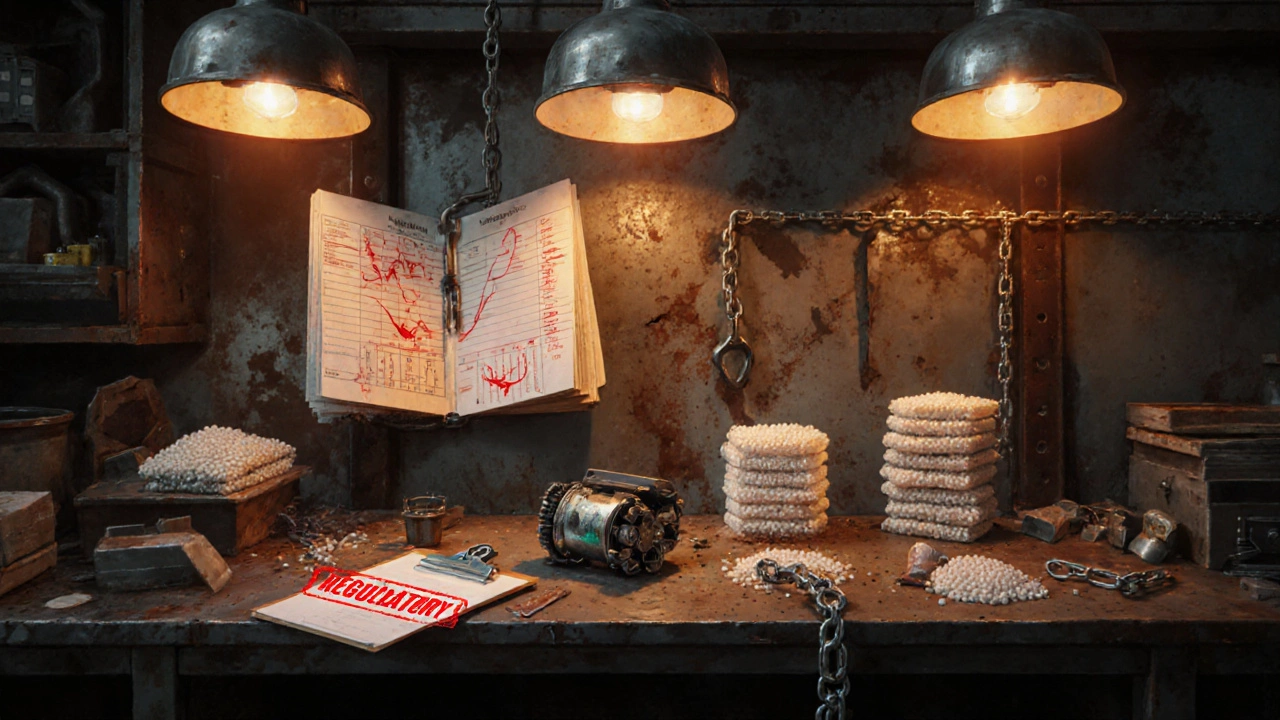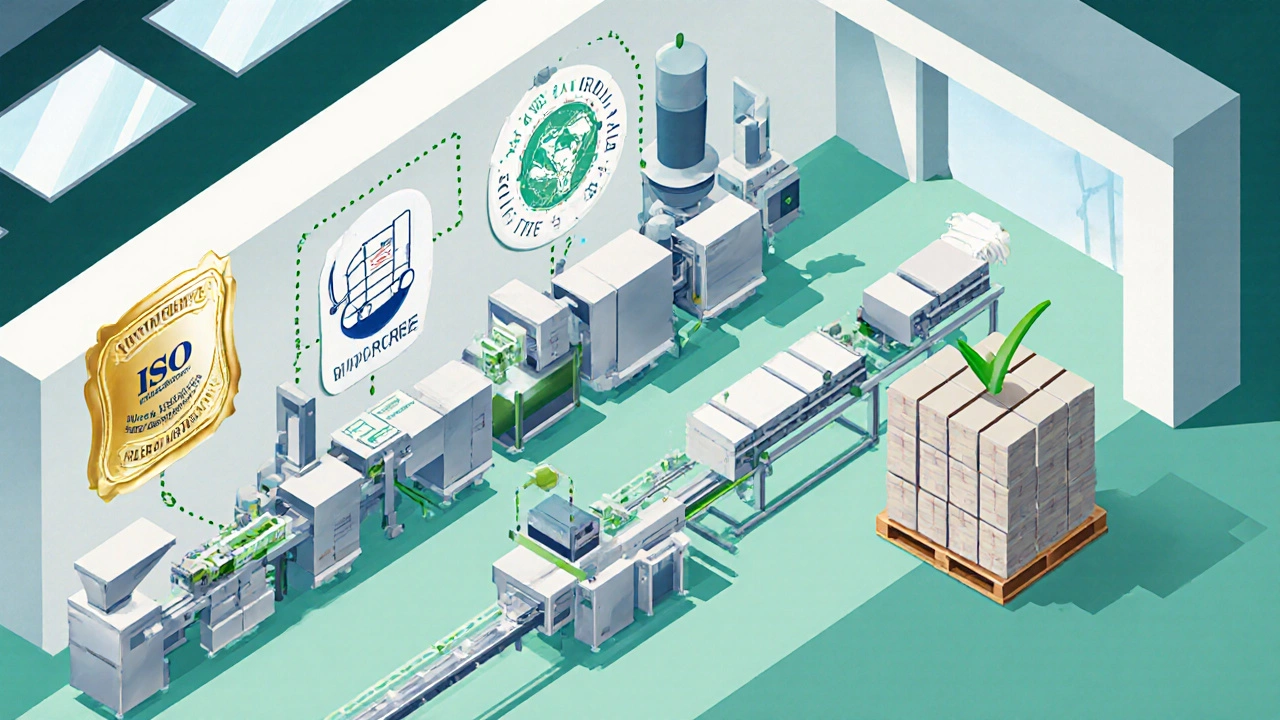
Manufacturing Startup Risk Calculator
Assess Your Startup Risk
This calculator estimates your startup's risk level based on key failure factors identified in the article. Each factor is rated on a scale of 1 (low risk) to 5 (high risk).
When you hear that startup failure rate hovers around 90%, it feels like doom‑and‑gloom for anyone thinking about launching a new venture. Yet the number isn’t a curse-it’s a data point that shows where most founders stumble. Understanding the real reasons behind the statistic helps you dodge the same traps, especially if you’re eyeing a manufacturing‑focused idea.
Startup is a newly formed company that aims to develop a scalable and repeatable business model, often in a high‑risk environment. While many startups are tech‑centric, a growing slice tackles tangible products, raw materials, and assembly lines. That shift introduces a whole new set of hurdles that aren’t always obvious in the classic "software‑first" advice.
The 90% Figure - Where Does It Come From?
Industry analysts like CB Insights and Startup Genome consistently report that roughly nine out of ten new companies shut down within the first five years. The figure aggregates data from venture‑backed firms, bootstrapped businesses, and everything in between. In 2024, a global survey of 3,600 founders found the median lifespan of a startup to be just 2.8 years.
Core Reasons Behind the High Failure Rate
These reasons cut across sectors, but they become especially brutal for manufacturers because of capital intensity and regulatory pressure.
- No product‑market fit - Building a gadget that no one wants is a quick way to bleed cash.
- Poor cash‑flow management - Manufacturing needs upfront spending on tooling, inventory, and labor.
- Weak team dynamics - A skilled engineer cannot compensate for a founder who can’t lead.
- Inadequate market research - Assuming demand based on anecdotal feedback leads to over‑production.
- Bad funding strategy - Relying solely on equity, ignoring debt or government grants, creates financing gaps.
- Regulatory blind spots - Missing safety certifications or environmental permits stalls production.
- Supply‑chain bottlenecks - Single‑source components can halt the line overnight.
Why Manufacturing Startups Face Extra Risks
Manufacturing startup is a venture that produces physical goods, often requiring specialized equipment, raw material sourcing, and compliance with industry standards. Unlike a SaaS business that can launch with a laptop, manufacturers must allocate significant capital before seeing any revenue. That upfront commitment amplifies every mistake.
Consider these added layers:
- Capital intensity: Tooling, molds, and factory rent can drain a seed round in weeks.
- Regulatory compliance: ISO certifications, safety audits, and local zoning laws add time and cost.
- Longer sales cycles: B2B buyers often require samples, testing, and contract negotiations.
- Inventory risk: Unsold stock ties up cash and occupies warehouse space.

Actionable Checklist to Beat the Odds
Use this short‑term checklist to validate your idea before committing heavy resources.
- Conduct market validation through at least 30 potential B2B customers.
- Build a minimum viable product (MVP) using 3‑D printing or outsourced prototyping.
- Run a cash‑flow forecast covering 12 months of production, inventory, and payroll.
- Secure at least one non‑dilutive funding source - grants, SBIR, or low‑interest loans.
- Map the supply chain and identify secondary suppliers for critical components.
- Draft a clear regulatory roadmap - list required certifications and timelines.
- Assemble a core team with complementary skills: product design, operations, and sales.
Real‑World Snapshot: A Plastic Packaging Startup
In 2022, a Sydney‑based team launched a biodegradable packaging line. They raised $500k from angel investors, bought a small extrusion machine, and began producing 5,000 units per month. Within six months they hit two major roadblocks:
- The target grocery chains demanded ISO 22000 certification, which took an extra nine months and $70k.
- One of their polymer suppliers faced a raw‑material shortage, halting production for three weeks.
Because they had a backup supplier and owned the certification process, the startup survived. However, they burned through 80% of their capital before breaking even, illustrating how quickly cash can evaporate without contingency planning.

Quick Reference: Failure Reasons at a Glance
| Reason | Typical Impact (% of startups) | Why It Hurts Manufacturing Most |
|---|---|---|
| Product‑market fit | 42% | Physical goods require upfront tooling; mis‑fit means sunk cost. |
| Cash‑flow issues | 38% | Long lead times demand large working capital. |
| Team problems | 23% | Manufacturing needs coordinated ops, engineering, and sales. |
| Regulatory gaps | 19% | Missing certifications halt production and sales. |
| Supply‑chain failures | 17% | Single‑source parts stop the line, eroding customer trust. |
Bottom Line
The 90% failure rate isn’t a death sentence; it’s a reality check. By focusing on product‑market fit, rigorous cash‑flow planning, solid team composition, and the unique challenges of manufacturing, you can dramatically improve your odds. Treat every potential risk as a checklist item, and you’ll move from “maybe” to “ready to roll” faster than most.
What is the most common reason startups fail?
Lack of product‑market fit tops the list. If customers don’t want your product, revenue never materialises, and cash runs out.
How does cash‑flow management differ for manufacturing startups?
Manufacturing needs upfront spending on tooling, raw materials, and labor before any sales. A detailed cash‑flow forecast covering at least 12 months is essential.
Can government grants help reduce the failure risk?
Yes. In Australia, programs like the Business Research and Innovation Initiative (BRII) and NSW’s Manufacturing Grants provide non‑dilutive funds that can cover prototype costs or certification fees.
What’s a quick way to test market demand for a physical product?
Run a limited‑run pilot using a local maker space or a small batch from an overseas contract manufacturer. Collect pre‑orders and feedback before scaling.
How important is having a secondary supplier?
Critical. A single‑source component can shut down the entire line if the supplier faces delays, quality issues, or price hikes.